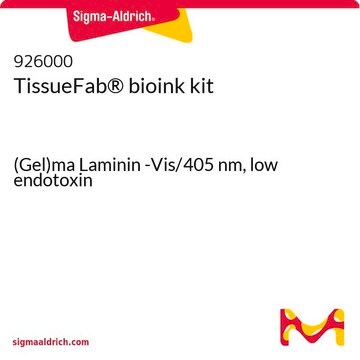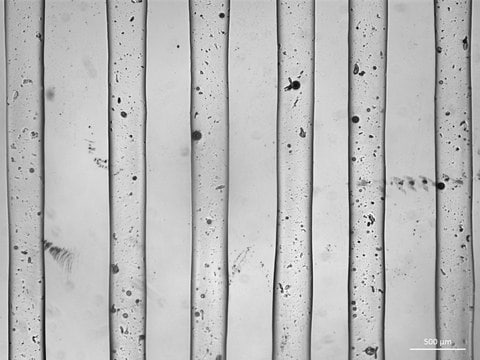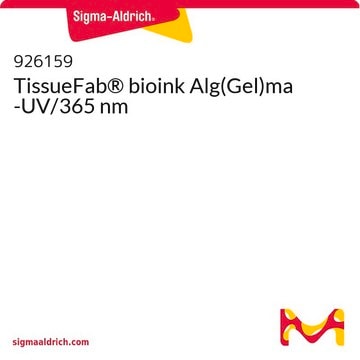919632
TissueFab® bioink
(GelHA)ma -UV/365 nm
Synonym(e):
Bioink, HAMA, Hyaluronic acid, Hyaluronic acid methacrylamide, Hyaluronic acid methacrylate, Hyaluronic acid methacryloyl, Sodium hyaluronate
About This Item
Empfohlene Produkte
Qualitätsniveau
Beschreibung
suitable for 3D bioprinting applications
Sterilität
sterile-filtered
Form
viscous liquid
Verunreinigungen
≤5 CFU/g Bioburden (Fungal)
≤5 CFU/g Bioburden (Total Aerobic)
Farbe
colorless to pale yellow
Partikelgröße
0.2 μm
pH-Wert
6.5-7.5
Anwendung(en)
3D bioprinting
Lagertemp.
2-8°C
Suchen Sie nach ähnlichen Produkten? Aufrufen Leitfaden zum Produktvergleich
Verwandte Kategorien
Anwendung
Verpackung
Rechtliche Hinweise
Lagerklassenschlüssel
10 - Combustible liquids
WGK
WGK 3
Analysenzertifikate (COA)
Suchen Sie nach Analysenzertifikate (COA), indem Sie die Lot-/Chargennummer des Produkts eingeben. Lot- und Chargennummern sind auf dem Produktetikett hinter den Wörtern ‘Lot’ oder ‘Batch’ (Lot oder Charge) zu finden.
Besitzen Sie dieses Produkt bereits?
In der Dokumentenbibliothek finden Sie die Dokumentation zu den Produkten, die Sie kürzlich erworben haben.
Artikel
Biotinten können im 3D-Bioprinting-Verfahren zu funktionalen Gewebekonstrukten für das Wirkstoffscreening, die Krankheitsmodellierung und die In-vitro-Transplantation hergestellt werden. Wählen Sie die Biotinten und die Methode für spezifische Anwendungen in der Gewebezüchtung aus.
Bioinks enable 3D bioprinting of tissue constructs for drug screening and transplantation; select suitable bioinks for specific tissue engineering.
Learn how 3D bioprinting is revolutionizing drug discovery with highly-controllable cell co-culture, printable biomaterials, and its potential to simulate tissues and organs. This review paper also compares 3D bioprinting to other advanced biomimetic techniques such as organoids and organ chips.
Unser Team von Wissenschaftlern verfügt über Erfahrung in allen Forschungsbereichen einschließlich Life Science, Materialwissenschaften, chemischer Synthese, Chromatographie, Analytik und vielen mehr..
Setzen Sie sich mit dem technischen Dienst in Verbindung.
